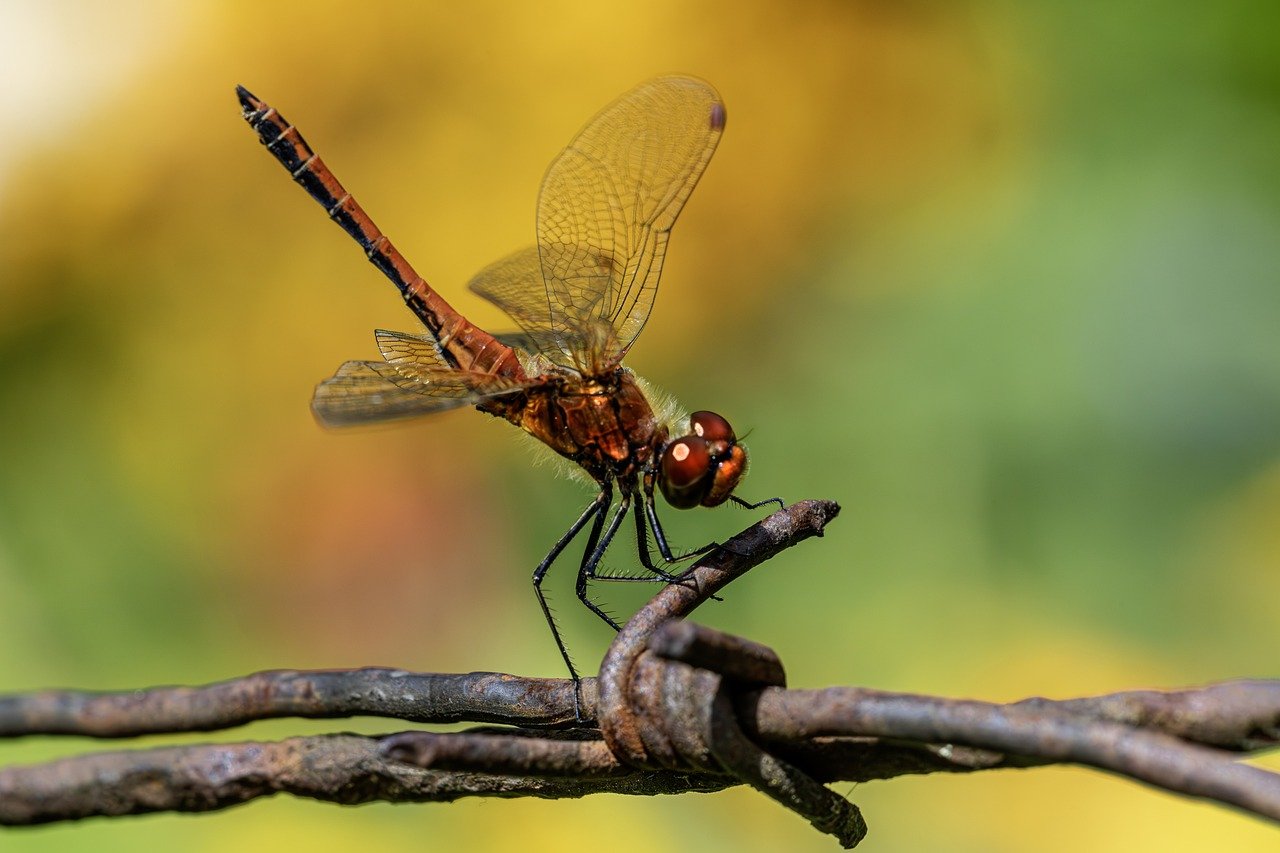The Ruddy Darter (Sympetrum sanguineum) is a vibrant and fascinating dragonfly known for its striking coloration and agile flight. Here are some key details about this species:
Appearance
- Size: The Ruddy Darter has a body length of about 34-36 mm (1.3-1.4 inches) and a wingspan of around 52-60 mm (2-2.4 inches).
- Coloration:
- Males: Mature males are distinguished by their vivid red bodies and reddish-brown faces. Their legs are black, and they have a characteristic club-shaped abdomen that tapers near the end.
- Females: Females and immature males are generally golden-yellow to brown with black markings. Females also have a more slender abdomen compared to males.
- Wings: The wings are transparent with a slight amber tint near the base. Both sexes have small, reddish-brown pterostigmas (wing spots) near the tips of their wings.
Habitat
- Range: Sympetrum sanguineum is widely distributed across Europe and parts of Asia, extending from the British Isles to Japan.
- Environment: This dragonfly prefers still or slow-moving waters such as ponds, lakes, marshes, and ditches. They are often found in areas with abundant vegetation both in and around the water.
Behavior
- Feeding: Ruddy Darters are carnivorous, feeding primarily on small insects, including mosquitoes, flies, and other small flying insects. They catch their prey in flight using their legs.
- Flight: They are strong, agile fliers and are often seen darting rapidly over the water or perching on vegetation.
- Activity Period: They are most active from June to October, with peak activity during the warmest part of the day.
Life Cycle
- Eggs: Females lay their eggs in flight, dipping the tip of their abdomen into the water or onto wet mud. The eggs hatch into larvae, known as nymphs.
- Nymphs: The nymphs are aquatic and undergo several molts over the course of one to two years. They are predatory, feeding on small aquatic organisms.
- Emergence: When ready to transform into adults, the nymphs climb out of the water onto vegetation. They shed their exoskeleton in a process called ecdysis, emerging as adult dragonflies.
- Adults: Adults are often seen perching on vegetation near water, basking in the sun, and engaging in territorial behavior.
Adaptations
- Camouflage: The coloration of the nymphs helps them blend into their aquatic environment, providing protection from predators.
- Agility: Their strong, agile flight allows them to efficiently catch prey and avoid predators.
Ecological Role
- Predators: Ruddy Darters play a significant role in controlling populations of small flying insects, including pests like mosquitoes.
- Prey: They are also a food source for birds, amphibians, and other larger predators.
Conservation
- Status: The Ruddy Darter is not currently considered endangered. However, like many dragonfly species, its populations can be affected by habitat loss, pollution, and changes in water quality.
- Conservation Efforts: Efforts to conserve this species include protecting and managing wetland habitats, monitoring water quality, and promoting the creation of ponds and other water bodies in both urban and rural areas.
Interesting Facts
- Territorial Behavior: Male Ruddy Darters are highly territorial and will often be seen defending their chosen perching sites from other males.
- Color Changes: The coloration of males intensifies as they mature, turning from an initial yellow-brown to a vibrant red.
The Ruddy Darter (Sympetrum sanguineum) is a striking and ecologically important dragonfly species. Its vibrant appearance and dynamic behavior make it a fascinating subject for both amateur naturalists and professional entomologists. Conservation of their wetland habitats is crucial for ensuring their continued presence and ecological contributions.
Visited 837 times, 7 visit(s) today
Views: 1156
Subscribe to the newsletter:
